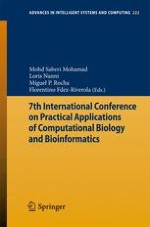2013 | OriginalPaper | Buchkapitel
Analysis of Word Symmetries in Human Genomes Using Next-Generation Sequencing Data
verfasst von : Vera Afreixo, João M. O. S. Rodrigues, Sara P. Garcia
Erschienen in: 7th International Conference on Practical Applications of Computational Biology & Bioinformatics
Verlag: Springer International Publishing
Aktivieren Sie unsere intelligente Suche, um passende Fachinhalte oder Patente zu finden.
Wählen Sie Textabschnitte aus um mit Künstlicher Intelligenz passenden Patente zu finden. powered by
Markieren Sie Textabschnitte, um KI-gestützt weitere passende Inhalte zu finden. powered by
We investigate Chargaff’s second parity rule and its extensions in the human genome, and evaluate its statistical significance. This phenomenon has been previously investigated in the reference human genome, but this sequence does not represent a proper sampling of the human population. With the 1000 genomes project, we have data from next-generation sequencing of different human individuals, constituting a sample of 1092 individuals. We explore and analyze this new type of data to evaluate the phenomenon of symmetry globally and for pairs of symmetric words.
Our methodology is based on measurements, traditional statistical tests and equivalence statistical tests using different parameters (e.g. mean, correlation coefficient).
We find that the global symmetries phenomenon is significant for word lengths smaller than 8. However, even when the global symmetry is significant, some symmetric word pairs do not present a significant positive correlation but a small or non positive correlation.
